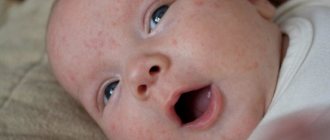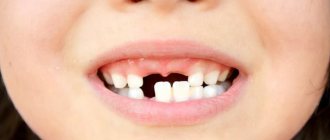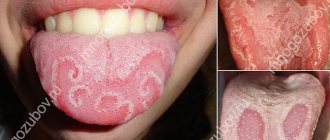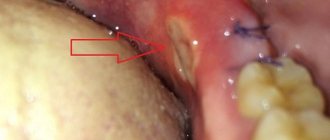What are the causes of such cracking:
- Weather + improper care
Cold and wind or hot sun contribute to dry lips, and if you do not take care of your lips in time and lick your lips, the skin becomes thin and cracks. It becomes difficult to heal cracks, since during talking, smiling and eating, the skin cracks again and again.
- Lack of vitamins A, B and E.
The skin loses strength, elasticity and moisture. Lips dry out and burst.
- Nasal breathing disorder
If a child breathes through his mouth, his lips instantly become chapped, especially in winter, and crack. If your baby does not have a runny nose, but still breathes through his mouth, contact an ENT specialist. Perhaps the problem is in the nasal septum or adenoids.
- Dehydration
Due to intense physical activity and accelerated metabolism, the child’s body spends a lot of fluid. Its absence primarily affects the condition of the lips - the only area of the skin that does not produce sebum.
- Stress, fatigue and increased physical activity
- Side effects of medications (diuretics, hormonal therapy)
- If a child eats and drinks something outside in winter
- Diseases of the gastrointestinal tract
Causes of vitamin deficiency
Accordingly, the following factors lead to vitamin deficiency.
Nutritional factors. Here we can highlight:
- predominant consumption of foods in which vitamins are present in insufficient quantities and are absent altogether;
- malnutrition. Passion for fasting and other “folk” methods of weight loss often cause hypovitaminosis;
- excess sugar consumption;
- culinary processing or storage conditions that contribute to the destruction of vitamins in foods. The diet must include fresh fruits and vegetables;
Digestive disorders, in particular:
- defects in the mechanisms of vitamin absorption;
- dysbiosis – a disruption of the normal microflora in the intestines (for example, as a result of an infectious disease or antibacterial therapy);
- activation of pathogenic microflora;
- intestinal parasites;
Factors that affect the body as a whole and suppress the immune system. This is, first of all:
- unfavorable environmental conditions (increased background radiation, ingestion of heavy metals, pesticides and other highly toxic substances);
- alcohol abuse;
- smoking;
Uncompensated increased need for vitamins. The body requires more vitamins than usual when:
- pregnancy and breastfeeding;
- stress;
- significant physical activity;
- work in low temperature conditions, etc.
How to care for your lips?
- If cracks form, be sure to keep the wounds clean and do not let your child touch them with his hands or chew his lips. If an infection gets into such a crack, it can fester.
- For older children who will not lick the medicine from their lips, use healing creams and ointments.
- You can compensate for the lack of vitamins both with the help of tablets and with topical application. Many vitamins are available in the form of capsules, the contents of which are used to treat damaged areas.
- Monitor the child's emotional state. Perhaps constantly chapped lips are an indicator of increased stress, fears and stress.
- Pay attention to how much fluid your child drinks. The best alternative to juices and tea is clean drinking water. To avoid irritating your lips again, you can drink through a straw. Especially to avoid contact with hot food and drinks.
- And, of course, you can’t do without using hygienic lipsticks and lip balms. You can also apply baby cream, olive, castor and sea buckthorn oils to your lips.
La-Cri products are designed specifically to help the little ones. They are based on natural hypoallergenic components and do not use dyes or fragrances.
Lip balm provides daily care, softens and heals lips. And the cream can be used for enhanced healing and regeneration in severe cracks. La-Cri cosmetics are suitable for children from 0 months and will be safe even if the baby licks it from his lips.
Treatment methods for vitamin deficiency
Treatment of hypo- and avitaminosis is aimed at replacing the vitamin missing in the body.
An excess of vitamins in the body - hypervitaminosis - is a dangerous condition and can lead to various disorders and disorders.
Diet correction
Since the main source of vitamins is food, proper, balanced nutrition is of great importance. It is advisable to eat fresh and natural foods. It is also worth considering that fat-soluble vitamins (A, D, E, K) are preserved during heat treatment, while water-soluble vitamins (vitamins B, C) are destroyed.
Meat contains vitamins B1, B2, PP, B6, B9, H, B5, lipoic acid, A. Fish contains B12, E, D and B5. Eggs supply our body with vitamins E, D, B5, H, A; grains - B1, PP, B6, B9, E; nuts - PP and N; vegetable oils - vitamin E. Dairy products contain B2, B12, A, D; vegetables, leafy greens and fruits - vitamins C, B6, B9, K, H, P, lipoic acid, beta-carotene.
Taking vitamin supplements
In serious cases, vitamin-containing preparations (vitamin complexes and single preparations) are prescribed to compensate for the lack of vitamins. Do not forget that such drugs have a serious effect on the body and should not be abused. The course of taking vitamins must be prescribed by a doctor.
Specialist consultation
Vitamin deficiency is treated by a general practitioner (internist or family doctor).
If you observe symptoms that suggest vitamin deficiency, contact any of the clinics of JSC “Family Doctor”. Our doctors will make a diagnosis and prescribe a course of treatment based on the specifics of your case.
Make an appointment Do not self-medicate. Contact our specialists who will correctly diagnose and prescribe treatment.
Rate how useful the material was
thank you for rating
Experts' opinion
As a result of clinical studies conducted, it was confirmed that La Cree lip balm:
- relieves discomfort and dry skin;
- restores dry and chapped lips;
- moisturizes and protects the delicate skin of the lips from cold and wind.
The conducted clinical study proves the high efficiency, safety and tolerability of products for daily skin care of children with mild and moderate forms of atopic dermatitis and during remission, accompanied by a decrease in the quality of life of patients. As a result of therapy, a decrease in the activity of the inflammatory process, a decrease in dryness, itching and flaking was noted.
Sources:
- Fokina R.A., Atopic dermatitis: stages of development of classification forms, Siberian Medical Journal, 2007
- A.N. Pampura, A.A. Chuslyaeva, Modern approaches to the treatment of atopic dermatitis in children
- Yukhtina N.V., Modern ideas about atopic dermatitis in children
Photos of diathesis
Photo album on the disease
Dermatitis in a child and psychosomatics
Skin health directly depends on a person’s mental well-being. Stress changes hormonal levels and metabolism, causing disruptions in the functioning of the immune system. Therefore, a calm emotional state will prevent exacerbation of the disease and delay the first appearance of symptoms.
When faced with contact dermatitis, analyze the causes and identify the allergen that caused it.
It's not always easy. To be sure of the correct diagnosis, conduct the necessary tests and receive treatment, come for a consultation at our center. In addition to treatment, you will learn how to properly prevent this disease. December 3, 2020
Author of the article: dermatologist Mak Vladimir Fedorovich
Folk remedies
On cracked lips in children, so-called jams often form on the sides. Traditional healers recommend treating them with earwax. Lubricate the wounds more often, everything will go away very quickly.
One of the main folk remedies is sea buckthorn oil. You can buy it at the pharmacy. Soak a cotton pad with the product and apply it to your lips. The procedure must be repeated several times a day.
A good remedy for dry lips is a mixture of fresh butter and honey. Apply it several times a day.
Pine buds need to be placed in a jar (fill the container halfway). Fill them with vegetable oil. The product should infuse for 2-3 weeks. The oil needs to be filtered and lubricated with it on the wounds on the lips until they heal. This remedy also helps with a runny nose and sore throat.
As soon as your lips begin to dry, lubricate them with goose or pork fat, or fresh butter.
Skin features in children
Children's skin differs in many ways from adults. She is too tender and vulnerable. In the first years of life, the sweat glands are not fully developed, so the child gives off excess heat through pulmonary breathing. Moreover, if the baby breathes dry air in a room where it is always hot, the load on the sweat glands increases greatly, and the skin begins to suffer. A baby's skin is practically never perfectly dry; this is due to its saturation with lipids (this is an innate feature). All chemicals destroy this lipid barrier, so various irritations often occur. Dry skin can also occur due to some health problems.
The skin on the lips of children is also very delicate and thin, so wounds and cracks often form on it.
Prevention
To prevent chapped lips in children, follow preventive measures. Simple recommendations will help protect your baby's delicate skin.
- Teach children to use chapstick from an early age.
- Show by personal example that you should not bite or lick your lips. Explain why.
- Humidify the air in the room, increase the amount of liquid to drink, especially during illness.
- Strengthen your immune system.
- The main thing is to immediately begin treating dry lips and do not let the condition develop into cracks.
Symptoms of cheilitis
The disease manifests itself in a variety of symptoms; common complaints include swelling, redness, peeling of the lips, the appearance of bleeding ulcers, purulent crusts, burning and pain when opening the mouth and eating.
There are several forms of this pathology:
- Catarrhal
- Glandular
- Exfoliative
- Eczematous
- Candida
- Allergic
The causes of catarrhal cheilitis are usually injuries, weather conditions, and chemical damage. This form of the disease manifests itself in the form of diffuse inflammation of the lips, swelling, redness, and peeling.
With glandular cheilitis, the mucous glands of the lips become inflamed. The disease can occur against the background of injuries with the addition of infection. The presence of bad habits can also contribute to the development of this form of cheilitis.
The disease manifests itself as enlarged glands, discharge of pus, and increased lip volume. Often, as a result of such an inflammatory process, the lips do not restore their previous shape, since changes in the form of cysts form in the labial glands.
Exfoliative cheilitis is divided into dry and exudative. Exfoliative cheilitis is more common in women. With dry exfoliative cheilitis, yellow scales appear on the lips and dryness is pronounced. In addition, the red border of the lips is affected by dyskeratosis.
The exudative form of exfoliative cheilitis is characterized by severe pain, swelling of the lip, and the presence of abundant crusts that make speech and eating difficult. Sometimes the crusts hang down in the form of an apron when the exudative phenomena are significant. Candidal cheilitis is provoked by the fungal infection Candida albicans, and this form of the disease is often combined with stomatitis.
Various allergens can cause another form of cheilitis - eczematous. This type of cheilitis occurs when there is an allergy to cosmetics, a lack of B vitamins in the body, or chronic injury to the lips. In addition, allergic (eczematous) cheilitis occurs due to increased sensitivity of the red border of the lips to chemicals (for example, dyes) included in toothpaste, lipstick, and dentures. It occurs with swelling and redness of the red border of the lips, then becomes covered with abundant scales and crusts, and painful cracks form in places.











